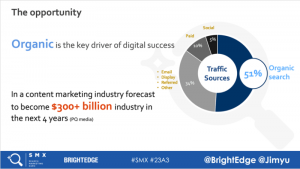 Most marketing technologies these days have multiple applications. Two separate systems may provide completely complementary capabilities for one marketing organization while being entirely redundant for another.
Most marketing technologies these days have multiple applications. Two separate systems may provide completely complementary capabilities for one marketing organization while being entirely redundant for another.
This is just one reason why thoroughly researching your marketing tech investments is so important. While there never seems to be enough time to perform an adequate vetting process these days, any time spent qualifying the best solutions and vendors will save you and your colleagues time, effort and budget down the road. And with 2016 only a quarter away, it’s time to start your search.
So, how should we marketers navigate a continually expanding sea of 2000+ MarTech solutions?
It helps to have a map…or at least rough sketch of landmarks to guide the way. Understanding what your organization needs before you assess trending industry tools and specific vendor capabilities is critical.
You should understand your company’s objectives, adjacent departmental needs, your current tech stack and its inadequacies, as well as budget parameters before researching specific vendors. Creating a marketing tech blueprint is the best way to figure all this stuff out (learn more about MarTech blueprints here).
Now on to vendor research.
What are the best information sources and what should you expect from each?
In my experience, jumping right into product demos is often a bad idea. Instead, I find it’s very helpful to first get a high-level view of the vendor landscape before diving headlong into individual solutions.
The following is a loose process you can use to guide your own buyer’s journey, but it’s by no means a hard-set industry “best practice.” You’ll want to combine various information sources in a way that provides you with a well-rounded view to make educated decisions and profitable tech investments.
That journey will vary between organizations and individuals. Each of the following vendor information sources provides unique benefits:
1. Research firm and analyst reports
Gartner Magic Quadrants and Forrester Waves (IDC has very helpful reports as well, but typically isn’t quite as focused on MarTech). These reports obviously aren’t free, but very useful if you have access.
Each firm provides objective perspectives (for the most part) on competing players in a given technology space. Over recent years, Forrester has placed a bit more emphasis on marketing tech research than Gartner or IDC, but the Magic Quadrants are certainly beneficial for several MarTech categories.
These reports get quite specific regarding strengths and weaknesses and which types of organizations (e.g., enterprise or SMB) will benefit most from a given solution, but there’s no way to fully grasp how each reviewed solution will work for your org, and thus you should carry on to additional sources.
2. Local vendor user groups or meet-ups
Just about every marketing automation vendor – from Infusionsoft to Hubspot to Marketo to Eloqua Oracle – has regular local meetups and/or user group events. These are great for networking, but even better for getting the real, customer-perspective info you need to select the right technology and vendor for your organization.
The key to helpful information – don’t let the meeting agenda dictate what you’re there to achieve. Go with the intention of discovering how other marketers are using various systems and tools. First, try to find the marketers that share common processes and requirements. A good way to quickly identify these folks is around length of sales cycle; the nine-month buyer’s journey marketer is a different breed from the ecommerce marketer.
Once you’ve found somewhat similar marketing brethren, ask them:
- What tools and systems do they use?
- What are their typical problems/roadblocks?
- What do they do (tech or otherwise) to tackle specific issues and customer needs?
- What do they like about their current technologies?
- What do they not like…and why?
- What tips do they have for getting more out of their investments? (this is often overlooked but can be very insightful)
Keep in mind – marketers these days love to show off their stack. We all like to seem more sophisticated than we really are. So don’t feel bad about interrogating people to get the info you need.
But keep in mind, most of us are too buried in work to understand all the ins and outs of our tech investments, so you need to support all the opinions you receive with other expert sources, such as…
3. Industry influencers
Regularly reading the blogs of various marketing influencers (and even reaching out to them personally) is an irreplaceable source of quality information. While influencer opinions aren’t usually as comprehensive as research report findings, such influencers often provide very useful, objective perspectives (with some subjective color) on various MarTech solutions — and they’re free. The influencer blogs that stand out the most in this capacity would be David Raab’s Customer Experience Matrix blog and Scott Brinker’s ChiefMartec.com.
Additionally, don’t be afraid to reach out to influencers with questions either; I always annoy guys like Matt Heinz of Heinz Marketing, Craig Rosenberg of TOPO and Justin Gray of LeadMD with specific questions about certain marketing tools and/or strategies. And their insights often go well beyond what I would obtain from a research firm report or the particular vendor’s content.
4. Your current partners
Your current tech vendors likely have their own opinions about complementary solution providers. These will be very biased, as they’re the result of both first- and second-hand experiences with regard to tech support, integration abilities, breadth of tools, etc.
But such subjectivity is a good thing in this case; these two vendors (and their technologies) will have to work in alignment, integrate with one another, and possibly even evolve together — so if your current partner has strong reasons for suggesting against a specific provider, you’ll want to take it seriously.
Of course, it’s wise to be aware of whether your current partner is soliciting you for a competing solution, in which case their opinion should carry slightly less weight.
5. Vendor websites, blogs, white papers, ebooks, etc.
Now that you’ve heard the biased opinions of third parties, you can focus on the biased opinions of the subject at hand. Most orgs treat their content differently. Some use blogs as purely thought leadership, while others use it as thinly veiled sales collateral. Same with white papers and ebooks. But these differences don’t matter as much as the nuggets of info you pull from the content as a whole.
Here are just a few of the questions you can use to assess vendors against one another while perusing their content:
- Does the vendor understand the space?
- Is its solution(s) clearly defined, and does it meet your needs (at first glance)?
- Are there any clear shortcomings that will affect your intended use?
- Does it have a credible customer list?
Also, be sure to look for any inconsistencies between vendor content and the information you obtained from previous sources.
6. Product demos
In additional to the intrinsic benefit of having tech providers show me their product in action, I like to use demos to answer any remaining questions I have after previous research, which most often end up relating to organizational fit. And organizational fit is very important.
For example, a certain marketing automation platform may get the highest marks by a research firm in the SMB category, but that doesn’t mean it has the specific set of tools that will best enhance your team’s marketing operations.
Every organization is different – different people, processes, customer needs, size, marketing strategies, etc. – and the return on tech investment will therefore be different for each org as well. As mentioned earlier, fit with current technologies (both third-party and in-house solutions) is crucial.
- Will the solution you’re assessing be able to integrate well with the internal campaign management system you developed eight years ago?
- How will the new lead gen tool deliver data to your marketing automation account?
- How much of your company’s IT time must you invest?
- What kind of tech support will be available?
These are often unexpected questions to the demonstrator, but you can learn a lot from unscripted responses – so I encourage you to have such interrogation tactics ready to go.
A good follow-up to any question you can ask about the ease of connecting systems/data is: “Okay, could you please walk me through the integration setup process right now?” If they can’t do it, it’s probably not as easy as they claim; if they can, well then you may just have found a huge differentiator.
Your particular research journey toward your next marketing tech investment will and should be customized to your specific needs. Ideally, you’ll want start with objective third-party sources before heading into more subjective opinions.
Most important, however, is that you consult enough sources, asking the right questions, to fully understand not only the capabilities of each solution you’re reviewing, but also how each solution will complement your current operations and address your unique challenges and opportunities.
Business & Finance Articles on Business 2 Community
(251)
Report Post






